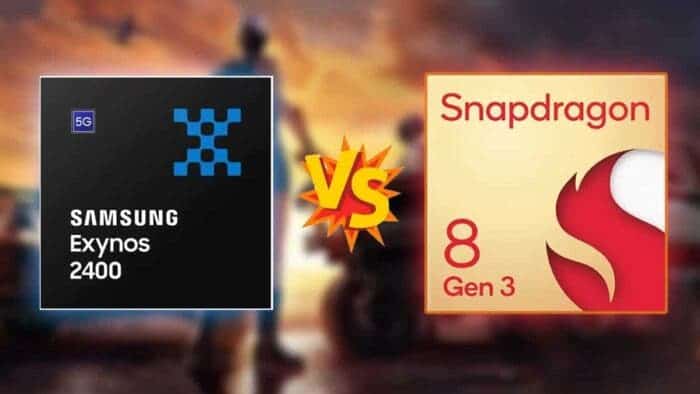A few days ago, South Korean manufacturing giant, Samsung released its latest flagship mobile phones. The Samsung Galaxy S24 series comes with two chips, the Samsung Exynos 2400 and Qualcomm Snapdragon 8 Gen 3. These chips are two of the most powerful SoCs available in the market at the moment. After the release of these devices, tech enthusiasts have now tested the performance of both chips in the Galaxy S24 series mobile phones. The testing was done on popular and globally accepted benchmarks. With the benchmark scores, we can then ascertain which of these chips suits our needs.
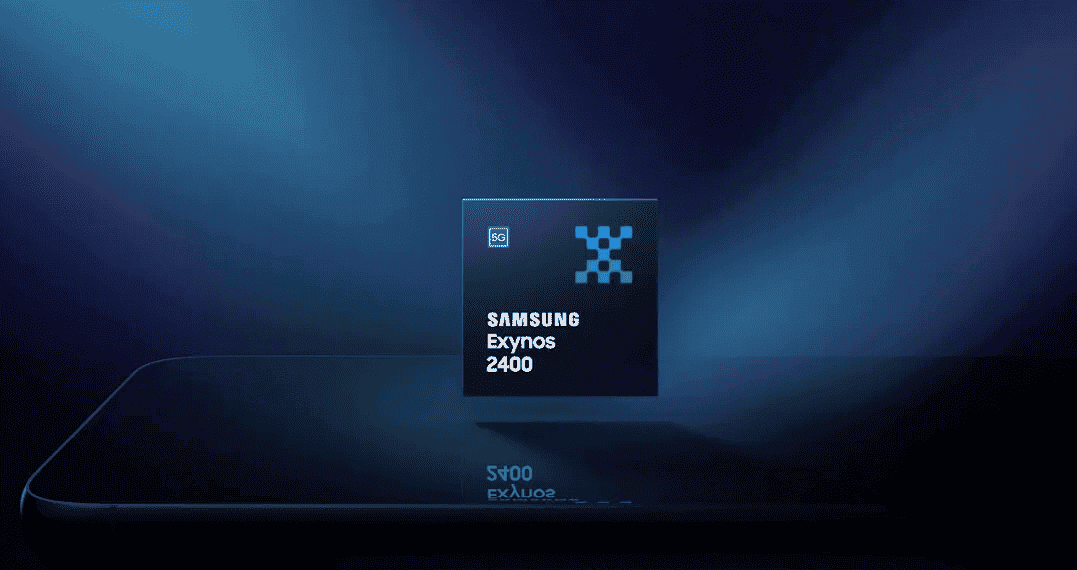
Key Differences
Before we proceed, it is important to succinctly discuss the key differences between these chips. The Snapdragon 8 Gen 3 has an octa-core CPU, while the Exynos 2400 has a deca-core CPU. This means that the Exynos 2400 is a 10-core processor with a higher GPU frequency (~56%) and 2 more cores relative to the Qualcomm Snapdragon 8 Gen 3, which is an 8-core processor.
The Snapdragon 8 Gen 3 has one Cortex-X4 CPU core clocked at 3.3GHz, while the Exynos 2400’s Cortex-X4 CPU core is clocked at 3.2GHz. It also has three Cortex-A720 CPU cores clocked at 3.15GHz and two Cortex-A720 CPU cores clocked at 2.27GHz. For the Exynos 2400, it has two Cortex-A720 CPU cores clocked at 2.9GHz and three Cortex-A720 CPU cores clocked at 1.95GHz. Both chips support UFS 4.0 storage and LPDDR5X RAM. The Exynos 2400 can drive 4K 120Hz screens, while the Snapdragon 8 Gen 3 maxes out at QHD+ screens at a 144Hz refresh rate.
Snapdragon 8 Gen 3 Vs Exynos 2400: Benchmarks Performance & Scores
AnTuTu
The AnTuTu scores of the Snapdragon 8 Gen 3 SoC and the Exynos 2400 SoC have been a topic of interest. Both chips show a pretty decent performance in initial AnTuTu runs but the Snapdragon 8 Gen 3 SoC is higher. The Snapdragon 8 Gen 3 SoC, on Galaxy S24, scores 1,699,940 points and the Galaxy S24 Ultra scores 1,819,945 points.
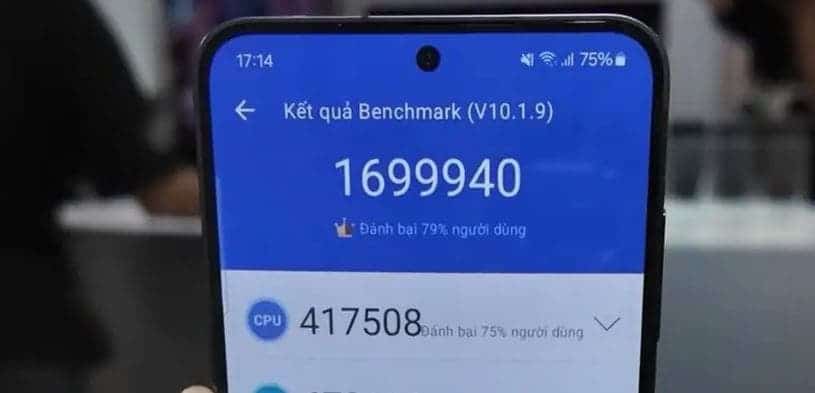
On the other hand, the Exynos 2400 SoC scores 1,639,695 points which is lower than the Snapdragon 8 Gen 3. This score reflects Snapdragon 8 Gen 3 is at least 6.7% better in performance than the Exynos 2400. However, it is important to note that the Exynos 2400 score is about 9% higher than the Snapdragon 8 Gen 2’s score of 1,502,531 points. The Exynos 2400 also outperformed the Snapdragon 8 Gen 2 in CPU and memory tests. Nonetheless, the Snapdragon 8 Gen 3 SoC has been lauded for its impressive performance in various benchmarks, indicating its competitiveness in the high-end SoC market.
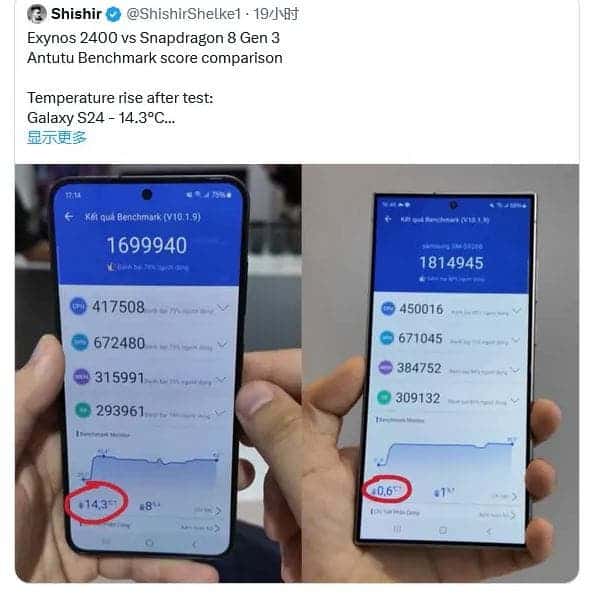
In the AnTuTu 10 benchmark, the Snapdragon 8 Gen 3 scored 2076K, while the Exynos 2400 scored 1652K. This indicates a 26% better performance for the Snapdragon 8 Gen 3. So, from the AnTuTu test results so far, the Snapdragon 8 Gen 3 is 6.7% to 26% better in performance.
Gizchina News of the week
3DMark
According to recent tests, the Exynos 2400 SoC outperforms the Snapdragon 8 Gen 3 SoC in terms of performance stability and scores higher in the 3DMark Solar Bay Stress Test and the WildLife Extreme test. In the Solar Bay Stress Test, the Exynos 2400 was able to sustain its throttling to just 64.6% of its actual capability. In the same test, the Snapdragon 8 Gen 3 was only able to sustain 48.3%. For the WildLife Extreme test, the Exynos 2400 records a score of 4231, which is still inferior to the Snapdragon 8 Gen 3’s score of 5338. However, the Exynos 2400 score represents around a 10% GPU performance advantage compared to last year’s Exynos 2200.
The Snapdragon 8 Gen 3 scored a massive 19,114 points with 114 FPS in the standard 3DMark WildLife test, and 5338 points with an average frame rate of 32 FPS in the more intensive 3DMark WildLife Extreme test. In the 3DMark Solar Bay benchmark test, which evaluates the ray-tracing capability, the Snapdragon 8 Gen 3 scored 8547 points with 32 FPS.
Geekbench 6
The Geekbench 6 scores of the Snapdragon 8 Gen 3 SoC and Exynos 2400 SoC show a close competition in terms of performance. The Snapdragon 8 Gen 3 SoC has a slight edge over the Exynos 2400 SoC in both single-core and multi-core tests. Here are the Geekbench 6 scores for both SoCs:
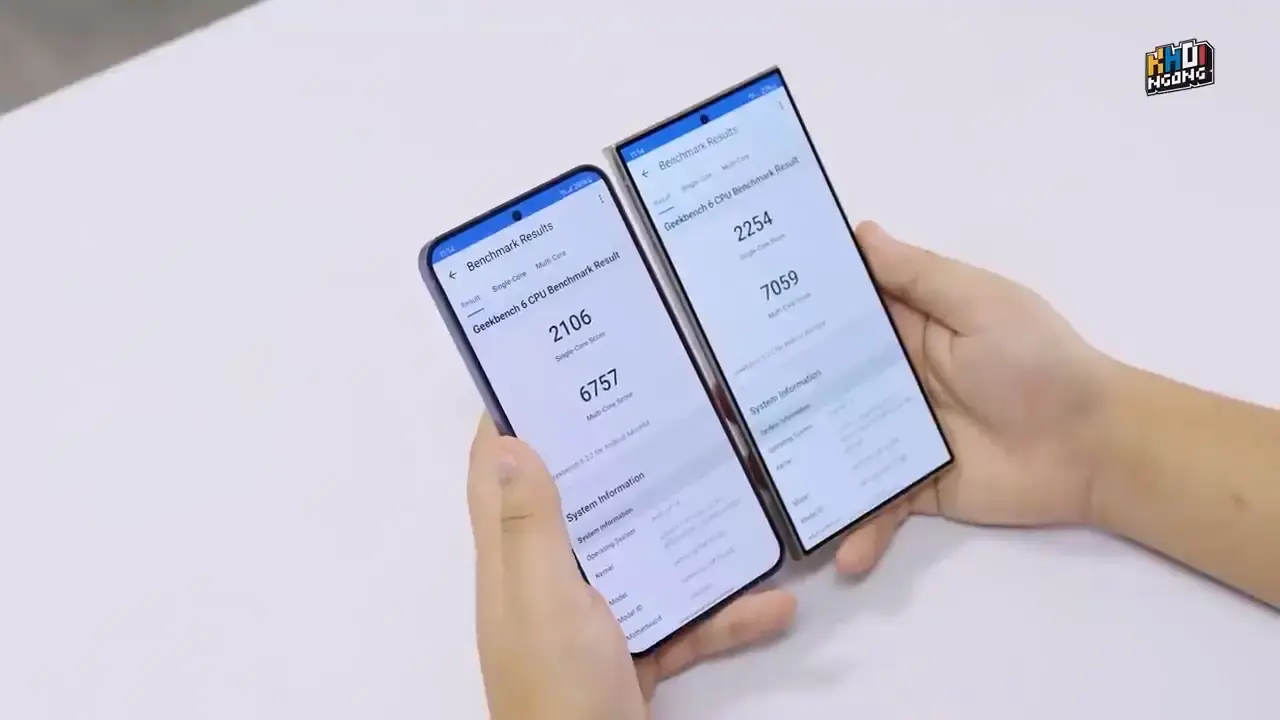
Snapdragon 8 Gen 3 SoC
– Single-core score: 2,254
– Multi-core score: 7,059
Exynos 2400 SoC
– Single-core score: 2,106
– Multi-core score: 6,757
Please note that the Snapdragon 8 Gen 3 score above is for the Galaxy S24 Ultra. The Snapdragon 8 Gen 3 SoC has a slightly higher single-core score (2,254 vs. 2,106) and a higher multi-core score (7,059 vs. 6,757) compared to the Exynos 2400 SoC. However, the performance difference between the two SoCs is not significant.
GPU Performance
The Snapdragon 8 Gen 3 SoC and Exynos 2400 SoC are both powerful processors. However, the scores show one to be higher than the other. The Snapdragon 8 Gen 3 SoC, powered by the Adreno 750 GPU, offers better GPU performance and efficiency, with a score of 902,878 in the GPU test of the AnTuTu benchmark. On the other hand, the Exynos 2400 SoC, equipped with the Xclipse 940 GPU, has a score of 590,540 in the same GPU test.
The Exynos 2400 SoC also shows a significant improvement in GPU performance compared to the Exynos 2200 SoC, with a 130% increase in performance. However, it is still behind the Snapdragon 8 Gen 3 SoC in terms of GPU performance.

Conclusion
Based on the benchmark scores and performance tests, the Qualcomm Snapdragon 8 Gen 3 outperforms the Samsung Exynos 2400 in most tests. The Snapdragon 8 Gen 3 shows better performance in AnTuTu 10, Geekbench 6, and 3DMark benchmarks, as well as in GPU performance tests. However, the Exynos 2400 has a higher GPU frequency and more CPU cores, which may provide better performance in certain applications.
Author Bio
Efe Udin is a seasoned tech writer with over seven years of experience. He covers a wide range of topics in the tech industry from industry politics to mobile phone performance. From mobile phones to tablets, Efe has also kept a keen eye on the latest advancements and trends. He provides insightful analysis and reviews to inform and educate readers. Efe is very passionate about tech and covers interesting stories as well as offers solutions where possible.

